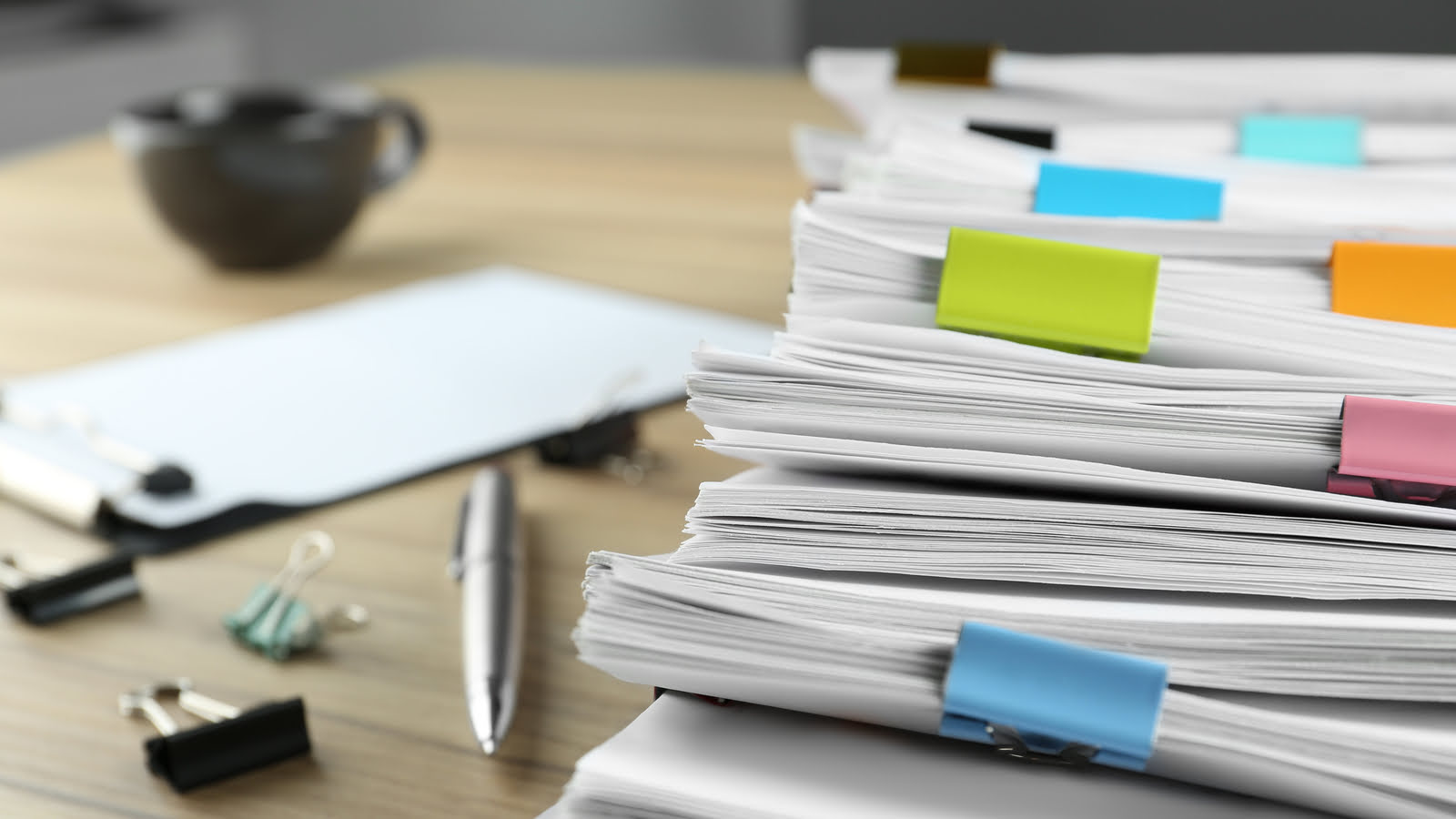Taxes take documents. These documents.
If you’ve filed taxes, you know it takes a lot of paperwork, which is one of the many reasons you might want to hire a professional to handle your tax returns for you. We’re big fans of that idea.
Just so you’re not surprised, here’s a quick look at some of the most common documents a tax professional might ask for when completing your tax returns.
Contents |
| Preliminary documents |
| Documents needed for an individual tax return |
| Documents needed for a business tax return |
Preliminary documents
Before getting started, most tax professionals will ask for a few things to assess your particular situation.
Tax questionnaire
The tax questionnaire is a classic way for tax professionals (and even sometimes auditors) to get an accurate picture of your finances from the get-go. It usually takes about ten minutes, and it will ask simple questions about your activities in the past year. Did you get married? Did you move?
The completed questionnaire will generate a list of any specific documentation you might need.
Prior year tax return
The information on your tax return from the previous year is, of course, out of date – that’s why we do a new one every year – but it still provides a lot of valuable information about the state of your financials. If your tax professional knows what your previous year looks like, it’s much easier to get you caught up to the present day.
Documents needed for an individual tax return
When handling your individual tax return – the IRS Form 1040 that everyone knows and loves – the biggest areas to cover are your income and your expenses. You’re required to claim all income (otherwise that’s tax evasion) and, if you’re claiming itemized tax deductions, you need clear records of all applicable expenses.
W-2s
If you earn income in the form of a wage, you get a W-2. This form comes from your employer and contains a record of your total wages paid throughout the year, as well as any income, Medicare, or social security tax that may have been withheld.
If you earn a wage, it’s pretty much the most important document for your tax return.
Schedule K-1s
A Schedule K-1 is similar to a W-2, but instead of reporting income earned from a wage, it reports income earned from investment into a partnership, S corp, or other type of business.
Consolidated 1099
This form reports even more types of income. If you earned money from dividends, selling stock, or certain other types of income, it goes here.
Brokerage companies will send out Consolidated 1099s to anyone investing through them.
1098
If you’re a lender that has received interest on a mortgage from a borrower, that income is to be reported on 1098.
1095
There are actually three varieties of 1095 (1095-A, 1095-B and 1095-C), but they share the same purpose: confirming that you have health insurance. There’s a form for ACA coverage, one for employer provided coverage, and one for other forms of private insurance coverage.
Summary of donations, medical expenses, and other write offs
If you’re planning to claim itemized tax write offs, you’ll need to provide detailed records of these expenses. Charitable donations, medical expenses, and even gambling losses (up to the amount of winnings) can be claimed as deductions. But you need documentation, like itemized invoices.
Documents needed for a business tax return
To prepare taxes for your business, generally you’ll only need four financial documents: Balance sheet, Profit and Loss statement, General Ledger, and Trial Balance. Your bookkeeping software should be able to generate all of these for you, but if you’re missing any, talk to your accountant or tax preparer.
Trial Balance
Your trial balance is a quick list of all the ledger accounts – cash, sales, inventory, etc – along with their debit or credit balances. In the tax preparation process, this is used to quickly fill out all the necessary fields in the tax software.
These numbers will need to be checked against the balance sheet and income statement later, but it’s the quickest way to get started.
Balance sheet
Your balance sheet contains your liabilities, equity, and assets, all added and subtracted from each other until they paint a clear picture of your current assets, as well as your adjusted basis on business investments.
The IRS will receive the entire balance sheet, and they use it to keep an eye out for large changes and other discrepancies.
Profit and Loss
Also known as the income statement, this document summarizes the income and expenses attached to your business in a given year.
Both income and expenses (which can be claimed as deductions) are directly relevant to your tax liability.
General Ledger
The general ledger is where all transactions made by your business are recorded on a day-to-day basis. It’s used to calculate all of the other major financial documents.
If there are any numbers in the other documents that aren’t adding up, the general ledger should contain the kind of detailed information needed to correct the mistake.
Bottom line
Everyone’s tax situation is different, and if yours is particularly unique, preparing your tax returns may require additional documentation aside from what we’ve listed here. But for the most part, this is what a tax professional will ask from you.
If you’re thinking about hiring a professional to handle your taxes this year, schedule a call with the experts on the DiMercurio Advisors tax team. We’ll help you file your returns with maximum accuracy, while finding every bit of savings we can.








